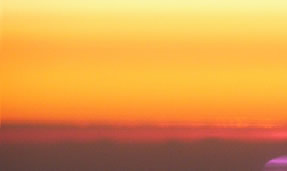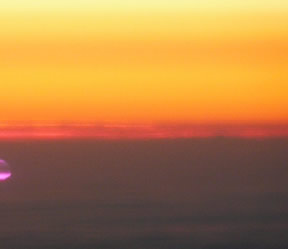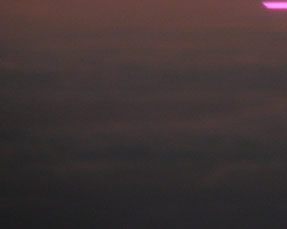
OPOD
What's New
Rays & Shadows
Crepuscular rays
Anti-crepuscular
Cloud shadows
Mountain Shadow
Earth's Shadow Blue Sky
Sunsets
Volcanic ash
Flattened Suns
Infrared sunset
More Images
Sunset Mirages
Green Flash
Moonrise/set
Opposition effect
Water Droplets
Rainbows
Ice Halos
High Atmosphere
Links & Resources
Search - Index
123456789012345678

| Infrared Sunset |
|
On a flight from Geneva to Warsaw, Philip
Laven (see his excellent Optics
of a water drop ) saw the low sun disappear behind clouds. But
his camera viewfinder showed a different scene - a purple sunset. Image ©Philip
Laven
"The amazing thing was that, with my unaided eyes, the sun was completely
invisible. However, the purple sun remained clearly visible on my
camera for about 2 minutes "
Digital cameras are sensitive to near infrared radiation.
Here, the water droplets in the cloud bank have scattered and obscured
the direct visible light of shorter wavelength but still transmit a
small fraction of the sun's infrared.
The solar image is quite flattened because the
picture was taken at fairly high altitude and rays from the sun then undergo
differential refraction twice - on entering and leaving the dense lower
atmosphere.
 |



